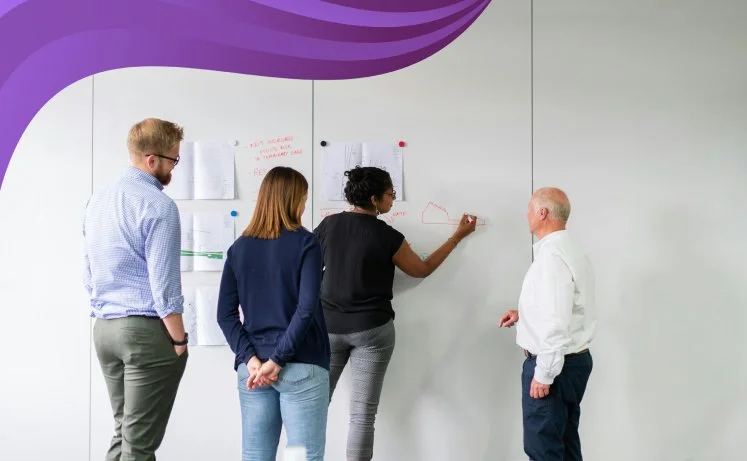
8. Future-Forward Leadership Series
Visionary Leadership
8.1 Building a Path Forward (Inspire a Shared Vision)
Define your North Star and make it real. You’ll craft a compelling, citizen-centered leadership vision and translate it into clear direction your team can rally behind.
-
Begin every initiative by articulating a compelling vision that will bring others along on the journey.
-
Vision vs. Mission vs. Goals (core differences and mountain-summit metaphor).
Five Essential Elements of a Vision: Ideal, Unique, Image, Future-oriented, Common Good (James Kouzes & Barry Posner, The Leadership Challenge).
Two Commitments of Inspiring a Shared Vision: Envision the future; Enlist others (James Kouzes & Barry Posner, The Leadership Challenge).
Exemplar analysis: MLK’s “I Have a Dream” (deconstructing language, themes, delivery) or alternative.
-
Write a compelling one-paragraph vision that imagines exciting and ennobling possibilities
Reduce confusion in planning and messaging
-
What differentiates a vision, mission and goals and why are they all critical to organizational success?
What are the two foundational commitments required to inspire a shared vision?
What are the Five Essential Elements of a Vision?
8.2 Inspiring Action through Goals and Expectations
8.3 Developing Strategic Foresight
Turn vision into traction with clear, measurable goals and shared expectations. Using a core goal-setting framework, participants translate a vision into specific goals, align ownership, and set simple rhythms for accountability.
-
Regularly set clear goals and expectations that drive your vision forward.
-
Goal design essentials: alignment to vision, measurable outcomes, clear ownership, first milestone.
Set up simple accountability rhythms to keep the vision alive in day-to-day work.
G-Wave Insights goal framework
WOOP framework (Gabriele Oettingen)
Commitment & accountability structures: check-ins, lightweight metrics
-
Draft one vision-aligned goal that names the owner, success measure, first milestone date, and needed support.
Establish a check-in cadence and a simple progress mechanisms.
Run a 10-minute Obstacles → Mitigations huddle; capture one immediate action per obstacle and one escalation for systemic issues.
Convert individual goals into shared commitments by clarifying interdependencies and a visible “who does what by when.”
-
What makes a goal “vision-aligned,” and how do we phrase them so they are actionable and measurable?
What goal-setting mechanisms can we build into our daily workflows to help us follow through consistently?
How do we hold expectations that translate into action and accountability?
See around corners with confidence. Build capacity to scan multiple possible futures, spot early signals of disruption, and make better decisions today—not by predicting, but by preparing.
-
Routinely frame decisions with “one future we expect, three we’re preparing for,” and track one or two early signals for each.
-
Strategic foresight, not prediction (multiple futures to make better decisions today).
Joseph Voros’ Cone of Possibilities (expected, plausible, possible, preferred)
Rapid scenario planning (driving forces, labels, signals, responses).
Why foresight matters (anticipate challenges, act proactively, find hidden opportunities).
-
Pressure-test a plan by outlining at least two alternative scenarios and the trigger points for each.
Share insights with cross-functional partners to widen perspective and align responses.
-
What is strategic foresight (vs. prediction), and why does it matter for proactive leadership and opportunity spotting?
How can we map expected, plausible, possible, and preferred futures for our priority using the Cone of Possibilities?
How do we run a rapid scenario exercise to surface early warning signals and practical response options?
8.4 Managing Complexity (Polarities and Paradoxes)
Strategic possibilities rarely come with simple solutions—they often show up as competing priorities that pull in different directions. This module equips leaders to recognize those recurring tensions, such as short-term results vs. long-term investments, and to manage them in a way that avoids swings to extremes. By mapping the upsides and downsides of each side, leaders design balanced actions and early warning signals that keep strategy moving forward with steadiness and impact.
-
Regularly name the polarities shaping your strategy and spot the warning signs to make shifts when needed.
-
Problems vs. Polarities: perception exercise (face/vase) to illustrate interdependence.
Polarity Mapping anatomy (Barry Johnston) and example tensions (e.g. short-term (today) ↔ long-term (tomorrow); stability ↔ change; standardization ↔ customization).
How polarity thinking explains resistance and improves decision quality.
-
Identify a live tension and complete a polarity map: two poles, upsides, downsides, higher purpose, deeper fear.
Agree on 3–5 actions to maximize upsides and define early warning indicators; add to your dashboard.
Balance the tension between common polarities (e.g., stability ↔ change; efficiency ↔ safety) to facilitate team alignment and reduce friction.
Replace a pros/cons debate with a both/and plan; assign owners and review in the next huddle.
-
What’s the difference between a problem to solve and a polarity to manage, and why does it matter for strategy?
Which tensions are most active in our work, and how do we map upsides and downsides of each?
How do I recognize early warning signs and set actions to stay out of the downsides and rebalance over time?
8.5 The Intersection between Strategy and Culture
A brilliant strategy can stall if the culture doesn’t back it up. This module helps leaders spot where current norms accelerate—or quietly sabotage—strategic goals and then translate strategy into specific behaviours and rituals that enable change. Leaders leave with practical tools to align culture and strategy so they reinforce each other instead of working at cross-purposes.
-
Align strategy with culture – and vice versa.
-
Strategy–Culture Cascade: from intent to behaviours, mechanisms, and measures.
4 relationships between Strategy and Culture: Reinforcing, Permitting, Constraining, Blocking
Values-based leadership
-
Shift behavioural habits of your team culture to advance your organizational strategy
Identify the existing norms of your team culture and how they help or hinder your strategic priorities
-
Where does our current culture enable or impede the strategy we’ve chosen?
Which specific behaviours and mindsets must change to make the strategy real?
What values, rituals and norms will lock those behaviours in?Where does our current culture enable or impede the strategy we’ve chosen?
Which specific behaviours and mindsets must change to make the strategy real?
What values, rituals and norms will lock those behaviours in?
8.6 Fostering Innovation
Innovate inside real-world constraints. In this module, leaders surface their biggest innovation barriers and use human-centered, small-experiment methods to make progress fast.
-
Innovate on a regular basis by adopting an experimentation mindset.
-
Innovation Barriers Assessment (surface and prioritize constraints).
IDEO’s Human-Centered Design: empathize, define, ideate, prototype, test.
Working inside operations: integrating experimentation into day-to-day work.
-
Complete an Innovation Barriers Assessment and pick the single highest-leverage barrier to address now.
Build a one-page experiment plan (user, problem, hypothesis, test, metric, next step) using HCD steps.
Co-design with users: run one empathy touchpoint and a scrappy prototype (paper/mock-up) before investing.
Add “experiment & learn” to team cadence with simple reporting (what we tried, what we learned, what we’ll change).
-
What barriers limit innovation in my context—and which one should I tackle first?
How do I apply human-centered design to move from problem to pilot quickly?
What guardrails and routines will help us learn safely and iteratively inside daily operations?







